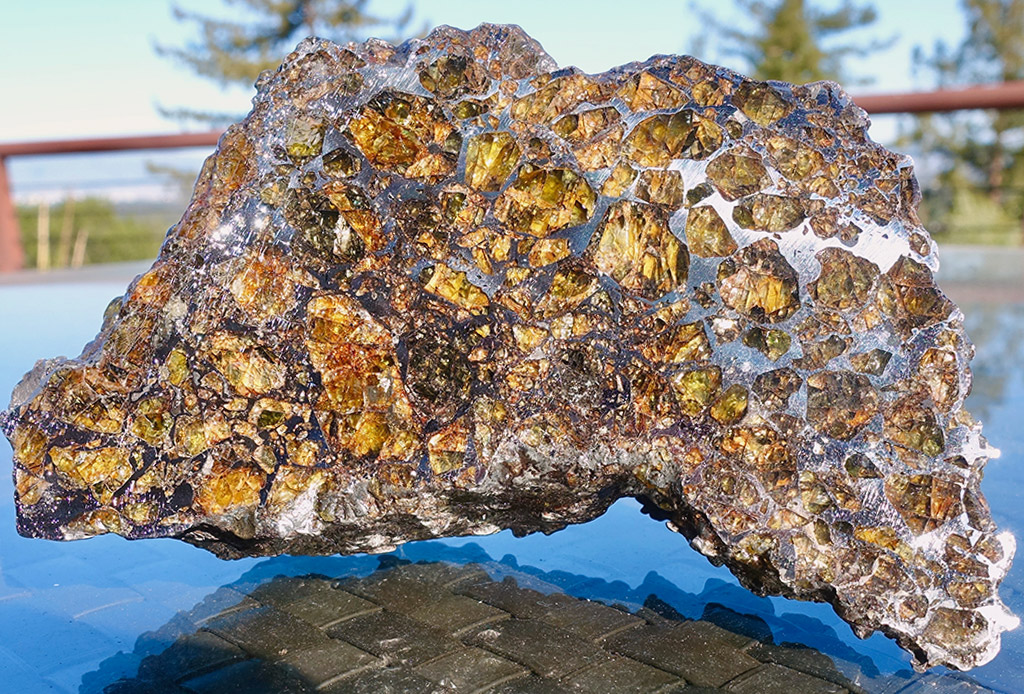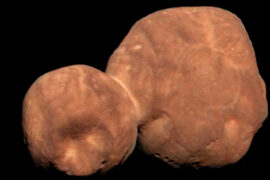Meteors and meteorites are a small, but important part of the Solar system. Within them, they have some of the secrets about the origin of the Solar system. Scientists can learn a lot by studying them, even things we didn’t know about our own planet.
Meteors also bring certain materials that are not easily found on Earth, and they also look pretty when they light up the sky as shooting stars.
In this article, we’ll learn the basics about meteors in a way that is easy to understand for everyone.
What is a Meteor? (for kids)

A meteor is simply a small space rock that travels through space and enters Earth’s atmosphere. In the atmosphere, the meteors begin to burn because of how fast they are going, and most of the time they explode into tiny little pieces of dust.
While they burn, they flash for a few seconds and leave a little trail of bright dust behind them. Sometimes we can see this from Earth and we call them “shooting stars” because, for those few moments, they can appear to be as bright as stars.
Sometimes Earth passes by an area in space that contains many meteors (usually left there by a comet). When that happens, it is possible to see many shooting stars in some areas of the sky in a short time. These events are called “meteor showers” and they are very fun to watch with family and friends. Here’s a list of meteor showers by month if you want to know when the next one will happen.
Occasionally, a meteor won’t fully burn and one or more pieces of it fall into the ocean or land on Earth. When this happens, the rock is no longer called a meteor. Instead, it is called a meteorite. Most meteorites are harmless and fall in places with no people in them.
Meteor Facts for Kids
1. Meteors have many names
Sometimes you will hear the words meteor, meteorite, and even meteoroid when talking about these space rocks. It can be confusing and you might wonder what’s the difference between them. But here’s the thing.
They are all the same thing.
All three terms refer to the same object. The difference is where the meteor is at any given moment.
A meteoroid is a meteor that is still in outer space.
A meteor is when it enters Earth’s atmosphere.
A meteorite is when it lands on Earth.
To keep things simple in this article we’ll mostly use the word meteor, but now you know the correct terms.
2. Most meteors come from the asteroid belt
The asteroid belt is a group of many large rocks that are located between Earth and Mars. There are millions of asteroids in it, and also a lot of meteors.
Sometimes these meteors hit each other and they are shot out of the asteroid belt and into space.
Most of the meteors that are traveling through the Solar system started out like that.
3. Meteors are made out of metals and rock
The large majority of meteorites that land on Earth are made of very common things, like iron, nickel, and stone.
Just by looking at them, it can be hard to tell the difference between a meteorite and a regular rock. Only on rare occasions do meteorites contain rare materials like gold or platinum.
However, there are some meteorites that have brought to Earth materials that can’t be found here, for example, neodymium and praseodymium which are rare elements that are necessary to make magnets.
4. Meteorites can be worth a lot of money

Small meteorites are valuable to collectors and museums for various reasons. It could be because of their large size, how they look, or because they contain rare elements.
There are meteorites that have been sold for hundreds of thousands or even millions of dollars.
The most expensive meteorite in the world is the Fukang meteorite. It was found in China in the year 2000 and weighs almost 1,000 kg (2,200 lb). It contains lots of olivine, a green gem used in precious jewelry and it has a value of $1.7 million dollars.
5. Most meteors are shorter than one meter
Meteors and asteroids can be confused sometimes because, in essence, they are the same thing. Rocks floating in space.
The main difference between them is that meteors are small. The definition of the International Astronomical Union says that meteors have to be shorter than 1 meter (3.2 ft). Any rock larger than that is considered an asteroid.
You can learn more about this in our article: How big are meteors?
6. Meteor showers are left by comets
Sometimes Earth passes by areas of space where a lot of meteors are passing by at the same time and that’s when “meteor showers” occur and we can see a lot of shooting stars one after the other.
These groups of meteors are a lot of times left there by comets. When a comet travels near the Sun, the sunlight melts some of the ice in the comet, and small pieces of rock break off, and become meteors.
When the orbit of our planet passes by these areas, all those meteors enter the atmosphere at the same time, causing meteor showers.
7. Millions of meteors enter Earth every day
Meteors range in size from tiny specks of dust to mid-sized rocks. Most of them are less than one centimeter (< 1/2 inch) long.
There are millions and millions of these tiny pieces of rock floating through space, and a lot of them enter Earth every day.
Most of these tiny meteors can’t be seen from Earth even when they burn in the atmosphere because they are so tiny they just disintegrate very quickly.
8. Meteors can travel very fast in space
When I say that meteors are “floating” in space. That doesn’t mean they are just there in one place. They are traveling, and they can be very fast.
Meteors enter the atmosphere at speeds between 10 and 70 kilometers per second (6.2 to 43 miles per second). That is more than 3,000 faster than most cars.
9. In the US, you can keep a meteorite if you find it in your home
Meteors can be found all over the world, and some of them land in the US. In the last 200 years, more than 1,800 meteorites have been discovered in the country.
If one of them happens to land in your home or you discover one that has been there since ancient times, you get to keep it, although you might want to think about selling it. In 2023, a museum offered $25,000 dollars to the person who could find a meteorite that landed in Maine.
10. Meteorites are usually harmless
Meteorites are small enough that even when they land on Earth, they rarely cause any damage.
Every once in a while, meteorites appear on the news because one fell into somebody’s home. But they rarely cause any harm. For example, on May 2023, a 6-inch (15 centimeters) meteorite fell into a family’s home in New Jersey. Thankfully, nobody was hurt.
You might have heard about big rocks coming from space and causing a lot of damage or leaving craters on the planet. Those are called asteroids and are much bigger than meteorites.







